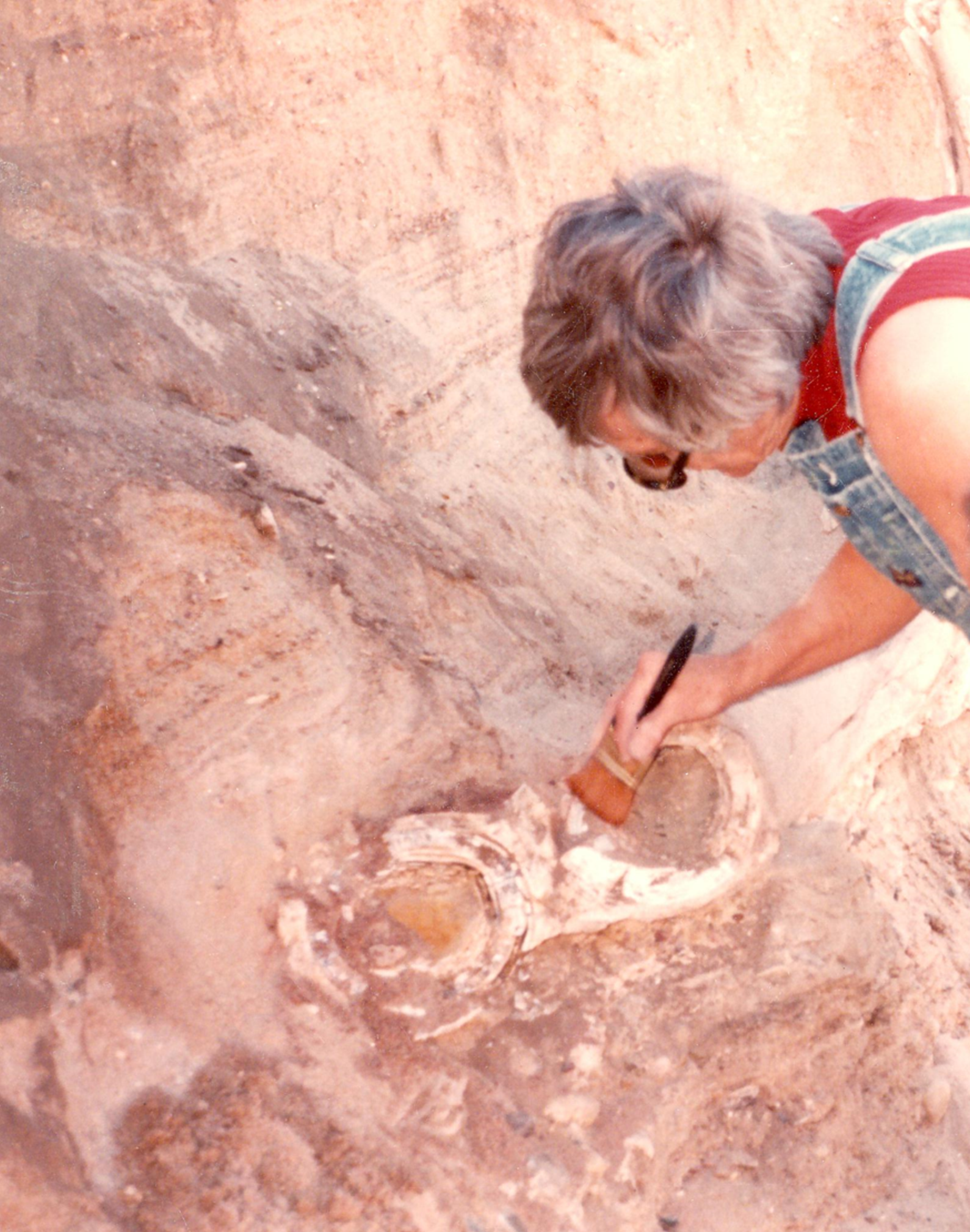Today, October 11, is the 14th anniversary of National Fossil Day. In parks and classrooms across the country and online, paleontologists, educators, and students are engaging in fossil-related events and activities to highlight the scientific and educational value of paleontology and the importance of preserving fossils for future generations. According to the National Park Service, paleontological resources or fossils are a tangible connection to life, landscapes, and climates of the past. They show us how life, landscapes, and climate have changed over time and how living things responded to those changes. Those lessons are particularly important as modern climate continues to change.
Back in 1981 there was considerable excitement in the area when two large fossilized tusks were discovered on the Dick Grusing farm. Hamilton County workers discovered the pair in a sandpit on October 26 when they were getting road gravel. Dick’s parents, Ed and Christina Grusing, spent three days digging the tusks from their resting place. Others helping at the “dig” site were Kearny County Museum board members and volunteers Della and Leonard Enslow, Nellie Kleeman, Leon and Nelle Jane Scheuerman and Lucile Dienst. The fossils were cleaned and pieced together to make a display at the Museum. Although they were not professional fossil diggers, the group wanted to ensure that the tusks remained in Kearny County.
According to the Lakin Independent, Dienst contacted university and Natural History Museum officials who determined the tusks came from an American two-tusk mastodon which became extinct eight to ten thousand years ago. The mastodon was an animal similar in appearance to the elephant. They were stockier than elephants, and averaged between seven and nine feet tall. There were about 100 different kinds of mastodons. Early mastodons had tusks in both jaws, but some of the later species lost the lower tusks. Others developed great, flat, lower tusks. Mastodons had cusp-shaped teeth that were very different from mammoths and elephants.
The mastodon tusks are not the only fossils on display at the Museum as we have several mammoth teeth on display. Mammoths were closely related to present-day elephants and arrived on the scene millions of years after the mastodon first appeared. Mammoths were huge, lumbering beasts, and some measured more than 14 feet high at the shoulders. The tusks curved down from the animal’s trunk. Mammoth fossils are among the most commonly discovered fossils, and many have been found in sandpits and near the Arkansas River bed.
A shark’s tooth, oyster, and shell can also be found in our fossil collection. Because Kansas was once covered by a shallow ocean of salt water, heavy deposits of sand, calcium carbonate and mud were left behind. Over time, these layers sank and caused the sediments to be pressed together and form limestone, sandstone, and shale. Fossils of marine animals such as bony fish, sharks and turtles have been found in the layers of these rocks buried in Southwest Kansas, providing evidence of the earliest life in this area. Shark teeth were frequently found west of Lakin near the Hartland area.
The Museum also has an example of coprolite. Donated by the late Dan Burns, coprolite is fossilized animal dung. This trace fossil was found in New Mexico.
There are two main types of fossils: body fossils and trace fossils. Body fossils are any “parts” of the actual living thing such as bones, teeth, insect bodies, shells, feathers, leaves, fruits, flowers, nuts, etc. Trace fossils are evidence of a living thing’s interaction with its environment and include footprints, trackways, swim traces, burrows or dens, root traces and feces. As pieces of once living things, body fossils are evidence of what was living where and when. Trace fossils are valuable because they “animate” the ancient animals or plants by recording a moment of an organism’s life when it was still alive.
Come check out our collection in the Annex where you can also see buffalo skulls and horns, a horse skull, cow skull and many more interesting artifacts!





SOURCES: National Park Service; Britannica Encyclopedia; Kansapedia; Nov. 19, 1981 Lakin Independent; and Museum archives.
